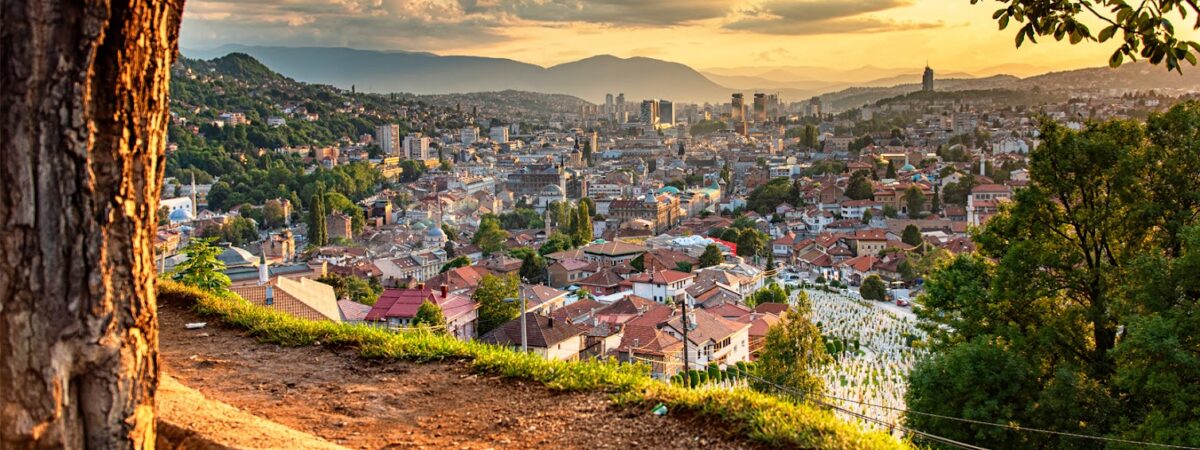Sarajevo is lively and modern, a capital offering a unique blend of big-city attractions and small-town charm. With a population of around 500,000, it combines a Central European atmosphere with Balkan culture and Ottoman heritage in a way that captivates. Standout features of Sarajevo include its fantastic food and festivals, but what truly sets the city apart is its friendly, generous, and humorous people. The locals carry on a deeply ingrained tradition of honest hospitality, making Sarajevo a place that will quickly feel like an old friend. Local expert Ruba Velagić helps us to get better acquainted.
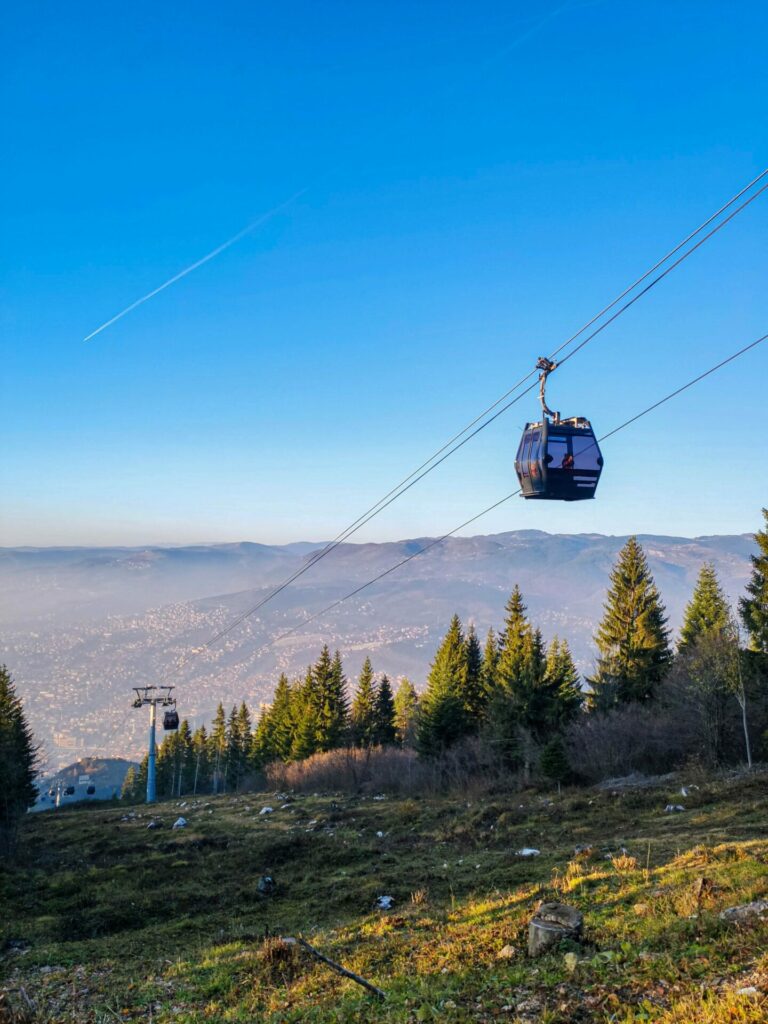
Upon Arrival
After a visitor arrives in my city, I recommend they visit Baščaršija, the heart of Sarajevo, to jump right into the city’s energy and culture. Don’t miss the iconic Sebilj wooden fountain and the many street food stalls serving traditional specialities. Take a walk and explore Sarajevo’s diverse religious sites, from Ottoman mosques to Jewish temples and synagogues, and breathtaking Orthodox and Catholic churches. Sarajevo truly is a mystical and multicultural destination, earning it the nickname “European Jerusalem”.
Make sure to also visit the city market — Markale — to get a taste of the local produce, and then head to an authentic kafana or bar for a cup of Bosnian coffee or a glass of homemade rakija (fruit brandy).
To dive more deeply into the history of Bosnia and Herzegovina, I highly recommend the National Museum of Bosnia and Herzegovina with its collection of over three million objects, where rich exhibits provide a fascinating overview of the country’s past. The Sarajevo City Hall, also known as Vijecnica, serves as both a City Hall and museum open to visitors, after being restored from severe damage during the Bosnian War. Sarajevo is also known as the site where World War I began, with the assassination of Archduke Franz Ferdinand. To learn more about this pivotal event in history, head to the Sarajevo 1878-1918 museum for the story behind the assassination.
Sarajevo is a safe and family-friendly city, surrounded by four Olympic mountains. For a relaxing family outing, head to the nearby neighbourhood of Ilidža or take the famous Sarajevo Cable Car up to Trebević Hill. Here you can enjoy a long walk and take in the stunning views of the city.
Locals would tell you to avoid international fast-food chains and instead, seek out local cuisine at the outdoor market or in one of the many traditional restaurants scattered throughout the city. You’ll be rewarded with dishes that are not to be missed!
Food From The Heart
For a genuine experience, head to Restaurant Nanina Kuhinja, Grandmother’s Kitchen, where you can sample typical Sarajevo cuisine (try my local favourite; filled dumplings known as klepe!). If you’re looking for vegetarian and vegan options, Žara iz duvara / The Singing Nettle serves meals decorated or made with nettles, a local delicacy. Sarajevo is a food lover’s paradise, with a rich culinary tradition that includes must-try dishes like ćevapi and Bosnian pies baked under the bell (a curved lid).
Sarajevo is renowned for its rakija, a homemade liqueur that locals love to celebrate with. Don’t miss the opportunity to sip this flavourful drink during your visit, along with Sarajevsko Beer. Head to Balkan Express or Sarajevo Brewery for a taste of the city’s pride and joy. Locals highly recommend the Sarajevsko Beer and it is definitely worth trying.
When I eat completely local, I will go to Sarajevo’s ašćinica in the old part of the city. These eateries serve “on-the-spoon meals”, home-cooked dishes that are perfect after a night out at bars or breweries.
Another three classic, iconic restaurants include Dveri, Avlija and Inat Kuća, offering interesting stories and a cosy ambience.
The part of town where locals come for traditional food is Sarajevo’s historic Baščaršija, a hub for local cuisine with delicious smells emanating from its many eateries. For a more diverse culinary experience, head to the modern restaurants in Ilidža or around Wilson’s Promenade. Whether you’re a dedicated foodie or just looking for a tasty meal, Sarajevo has something for everyone.
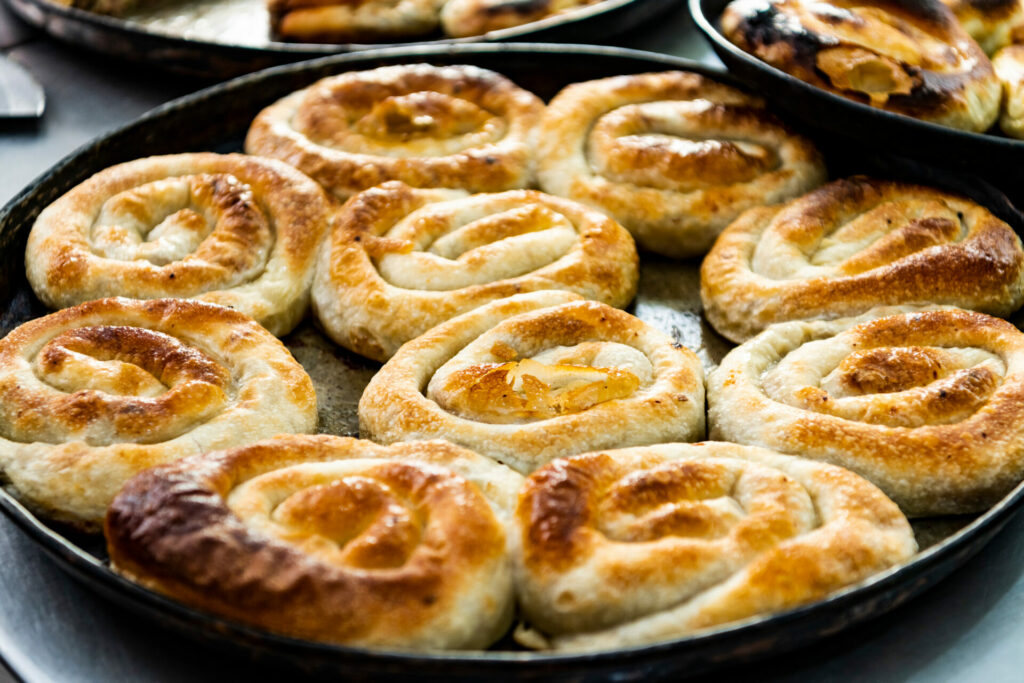
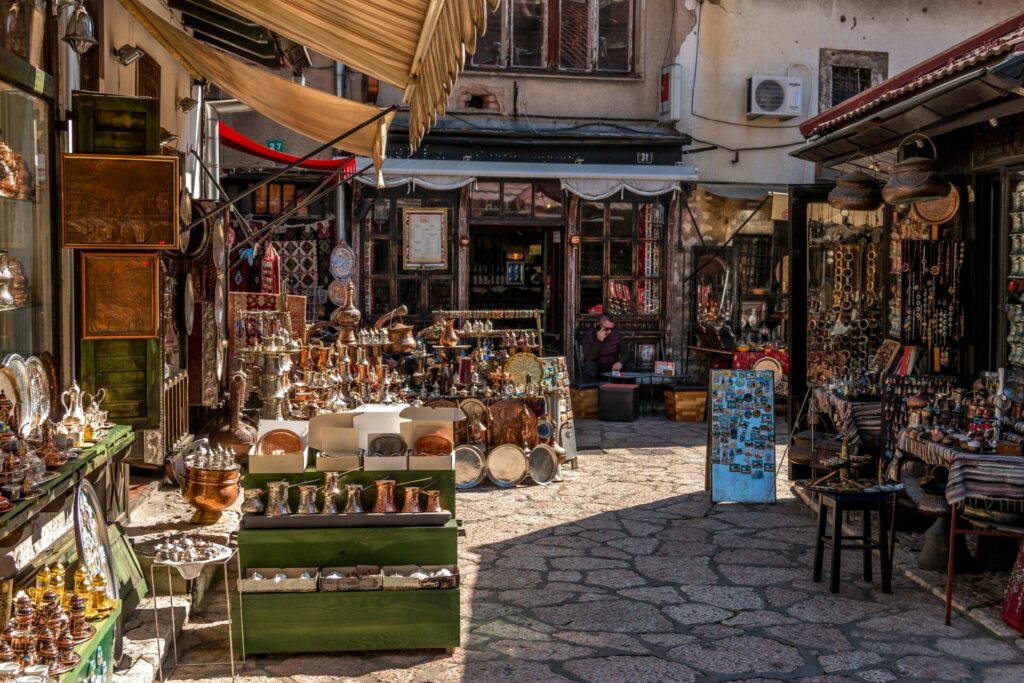
Shopping Locally
My city is known for its vibrant crafts scene, with craftsmen and women still practising their time-honoured trades on every corner of the Ottoman part of the city. From the sound of coppersmiths’ hammers to the sight of many other skilled makers at work, the city’s rich history of specialising in over 70 different crafts is on display, with 400 different products created in this part of town. Some native crafts have achieved artistic heights, becoming known and appreciated throughout the Ottoman Empire.
For the ultimate outdoor food in Sarajevo, don’t miss the Markale City Market. Here, visitors can sample and purchase local dried meats and cheeses, which also make for great souvenirs.
For an true taste of Sarajevo’s culture, I always take my guests to the Baščaršija area, the focal point of the city. Here, visitors can shop for handcrafted souvenirs made with local materials by proud shop owners. These items are unique and special, exemplifying traditional Bosnian culture. For a more modern twist, check out Bazerdžan, Revolt Clothing, Molimao, and other similar shops for souvenirs created by local artists that are inspired by Sarajevo’s people, traditions, and culture.
Getting Deeper Into Sarajevo
Sarajevo’s past is one of complexity and, at times, sorrow. The city suffered the longest siege in modern history from 1992 to 1995, leaving behind scars that are still healing to this day. Despite the hardship, the people of Sarajevo held fast to preserving their culture and maintaining the feeling of normal everyday life.
To truly comprehend this city, one must delve into its literature. The Cellist of Sarajevo by Steven Galloway is a poignant novel set during the siege, telling the story of a musician who plays his cello in public to honour those who perished during the conflict. Sarajevo: A Bosnian Kaleidoscope by Fran Markowitz is a collection of essays from both local and international authors about Sarajevo’s history, culture, and society. Bosnian authors such as Aleksandar Hemon are internationally renowned and provide invaluable insights into the soul of Sarajevo’s people through their writing.
Most people know about Sarajevo’s Baščaršija, the hub of the city’s Ottoman past, and the beautiful Gazi Husrev-beg Mosque built in the 16th century. At the centre of Baščaršija, the Sebilj, a small wooden kiosk is a popular meeting spot for locals and tourists. The Latin Bridge, famous for being the site of the assassination of Archduke Franz Ferdinand of Austria in 1914, is also a significant historical landmark. But when it comes to must-see sights, the Orthodox Cathedral of the Nativity of the Theotokos should also be on your list, being one of the largest Orthodox churches in the region.
Sarajevo is a city that attracts people year-round with its lively downtown full of cafés, easygoing atmosphere, outstanding winter sports season, and colourful parks during spring and fall. The city is also great to tour during the summer season, and visitors say that there is a special energy in Sarajevo during the Holy Month of Ramadan, when the rhythm of the city changes and the whole place smells like delicious Sarajevo Ramadan flatbread — somun.
If you’re a music and dance enthusiast, be sure to check out the Garden of Dreams Festival and the local music events by Sarajevo Matinée. Garden of Dreams takes place in the summer and features performances by local and international DJs in a beautiful outdoor setting, while Sarajevo Matinée organises events throughout the year at popular architectural and cultural sites, bringing together local musicians and music lovers to celebrate the city’s thriving music scene.
While the city’s war story is part of its identity, Sarajevo is a destination to excite all the senses and to experience old ways, such as drinking Bosnian coffee in the city centre while observing life happening around you. Sarajevo is a complex, undiscovered, and mystical place, so much so that staying here is transformative for many who visit.
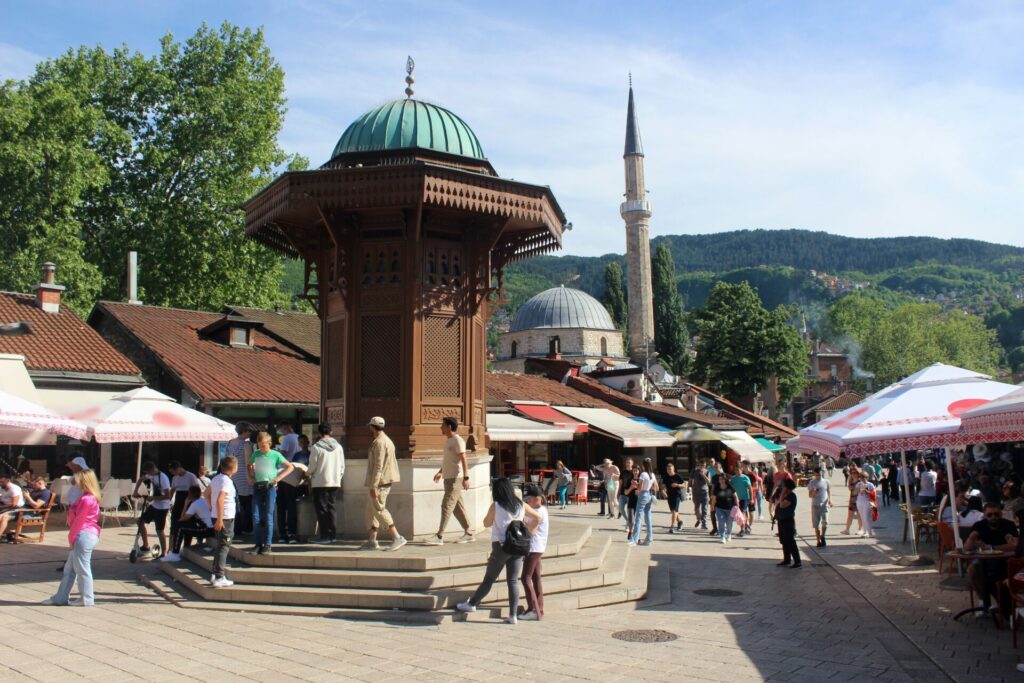
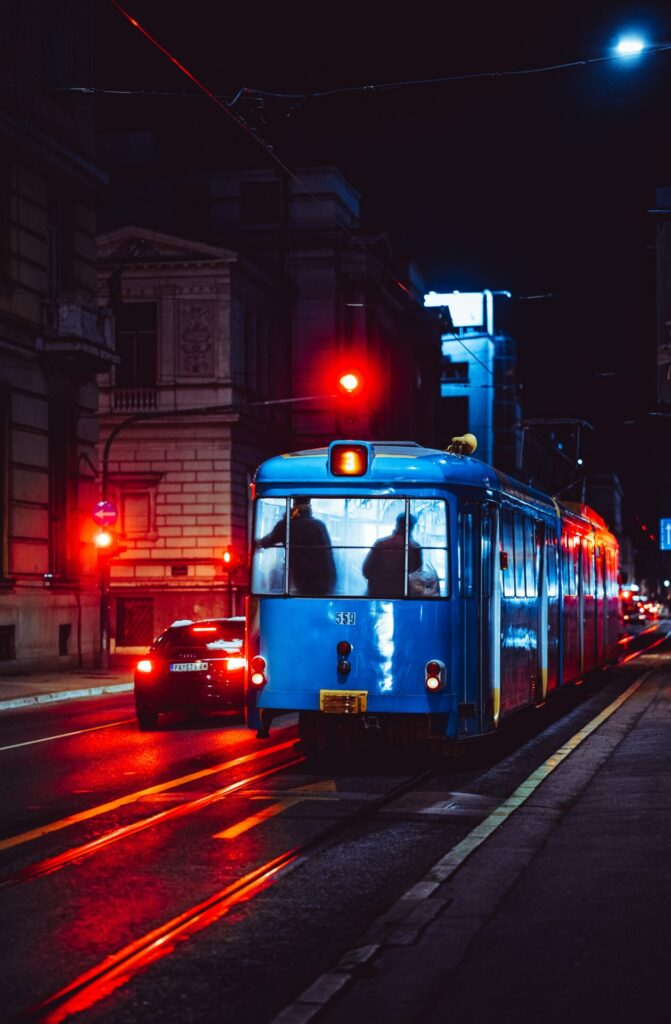
Getting Around Sarajevo
One thing you should know about getting around my city is that there are various ways to do so, depending on your preference. Sarajevo is a city that can easily be explored on foot, with many of its main attractions located close to each other. Walking around the Ottoman part of the city is especially recommended to take in the sights, sounds, and smells of the bustling Baščaršija market and other nearby historic landmarks.
To delve deeper into the local way of life, hop on one of Sarajevo’s trams. Fun fact: Sarajevo was among the first cities in Europe to introduce trams, and they have been an integral part of the city’s charm since 1985. Take a ride for an inexpensive and entertaining way to check out Sarajevo, from the bustling city centre to the charming neighbourhood of Ilidža.
If you prefer not to walk or take the tram, there are also buses that run throughout the city and taxis that are relatively cheap compared to other European cities. However, taking a taxi can also mean missing out on the charm and character of Sarajevo’s narrow streets and hidden corners. So, consider walking or taking public transportation to truly experience the city.
Outside The City
Escape the city and immerse yourself in the natural beauty of Sarajevo’s surrounding mountains. My favourite spot for a hike is Mount Trebević and the nature park that shares its name. After taking in the breathtaking views from the top, head to the Jure Franko Mountain Hut to indulge in their hearty bean stew and locally produced forest chokeberry brandy. Other nearby mountains like Jahorina, Bjelašnica, and Igman offer endless trails and outdoor experiences that are easily accessible and just a 30-40 minute drive from the city centre.
For those looking to venture beyond the borders of Sarajevo, I highly recommend exploring the nearby cities and attractions through day trips. Visoko, Kakanj, Travnik and Fojnica are all just a short 60-minute drive away and offer a wealth of cultural and historical experiences. One of my personal favourite destinations is the Ethno Bey’s Village, where you can enjoy fantastic food and take in the natural beauty of Bijambare Nature Park. This park is home to fascinating caves waiting to be investigated, making it a must-visit spot for adventure enthusiasts.
Many people will head south to the sunny Herzegovina region, renowned for its Mediterranean cuisine, river beaches, and warm weather. For a captivating journey, take the train ride from Sarajevo to the famous city of Mostar, offering scenic views and an unforgettable commuting experience. This route has even been recognised as one of the 10 most fascinating railway journeys in Europe. Herzegovina is the centre of the country’s slow food movement, with cities like Trebinje leading the charge. The Herzegovina Wine Route is the highlight of the region, featuring 30 different vineyards with a diverse range of local wines to taste. Additionally, the region offers numerous opportunities to explore its rivers, waterfalls, religious landmarks, and outdoor adventures, all contributing to a richer understanding of the country’s stunning and intricate landscapes.
I really enjoy the view of my city from the White Fortress and Yellow Bastion, historic fortifications dating back to the 18th century that offer breathtaking views of Sarajevo. Visitors can also take in stunning panoramic views from Trebević Hill or while indulging in something sweet at Kamarija ‘Point of View’ Café.


Connecting with Locals
To hang out with my friends and go to a real insider spot, I go to Barhana, a cosy bar located in the historic Baščaršija district. Here, I can soak up the atmosphere of old Sarajevo while sipping on some delicious local beer or wine.
The best resource for finding out what’s going on around town (events) is the Tourism Board of Canton Sarajevo Visit Sarajevo website. It’s a great source of information on everything from concerts and exhibitions to sports events and cultural festivals.
When I want to enjoy my city without spending much (or any) money, I like to take a walk through the city’s parks, such as Vrelo Bosne or Atmejdan in the Old Town, or bring some drinks and watch the sunset from the Yellow Bastion. These beautiful green spaces are perfect for a picnic, a stroll, or simply relaxing in the fresh air.
When it comes to Sarajevo nightlife, Jazzbina is my go-to music spot due to its cosy ambience and intimate setting that showcases live jazz performances by both local and international artists. Alternatively, when I’m in the mood for dancing, I opt for Silver and Smoke Club, known for its electronic music, or Sloga, a trendy club that offers an excellent blend of music genres ranging from techno and house to hip-hop and R&B.
Finding Solitude in City
When I want to find a peaceful spot to reflect on the beauty of Sarajevo, I head to the Vrelo Bosne Nature Park. This park is located at the source of the Bosna River and features walking trails, picnic areas, and scenic views of the surrounding mountains.
If there is one thing about my city that fills me most with pride, it’s that it represents the spot where the East meets the West – Sarajevo, the crossroads of civilizations, is a place that encapsulates the complex and intricate history of our country and city. It is a point that bears witness to the influence of all the times and civilizations that have shaped it. This place truly embodies the spirit of freedom, artistic expression, love, and coexistence. Its atmosphere is so rich that you can fully experience it just by standing and observing, appreciating the very essence of Sarajevo.
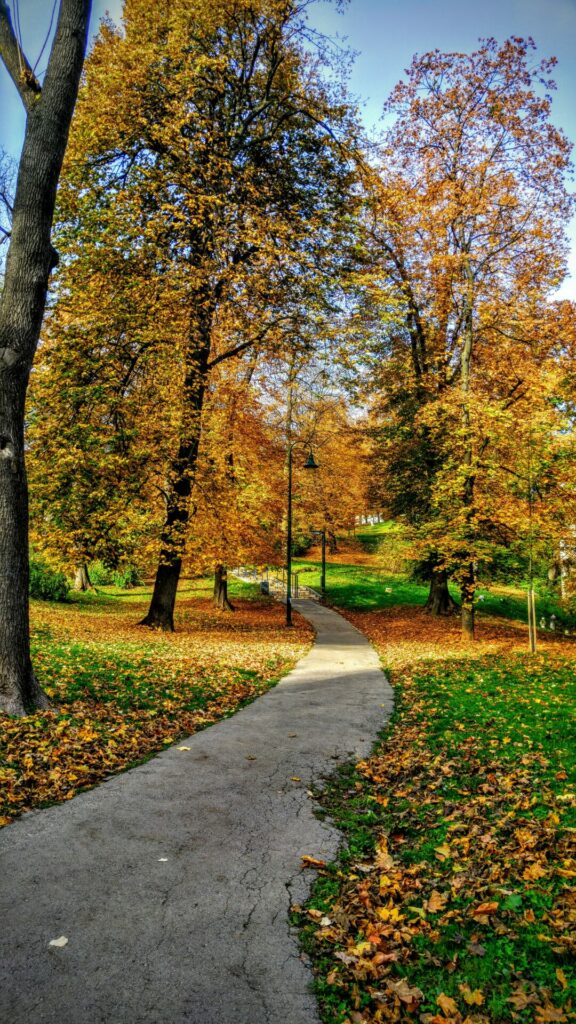

When the Seasons Change, This City Shines
In spring (March-May), the weather is mild, and the surrounding nature is in full bloom. It’s an ideal time to take a hike up Mount Trebević to explore the city’s lush greenery and stunning views from above. The hiking trails are easily accessible and offer a chance to escape the hustle and bustle of the city.
Summer (June-August) in Sarajevo is the perfect time to attend the renowned Sarajevo Film Festival when the whole world gathers in the city. One of the most significant cultural events in the region — with film screenings, concerts, art exhibitions, parties, and other events throughout the city during the festival — it attracts artists and film enthusiasts from around the globe. Visitors can also make the most of the warm weather by exploring the city’s parks, meandering through historic areas, or with a cup of Bosnian coffee at one of the many cafés.
In the fall (September-November), Sarajevo is breathtaking with its colourful parks and lively streets. Visitors can experience the vibrant atmosphere of the city, explore its history and culture, and enjoy the mild temperatures. Take a stroll through the historic Baščaršija neighbourhood, visit the National Museum of Bosnia and Herzegovina, or appreciate the autumn foliage in one of the city’s many parks.
Winter (December-February) in Sarajevo is perfect for ice skating, skiing and winter sports, with the city’s Olympic heritage offering a range of ski resorts and activities for visitors. The snowy landscape creates a picturesque setting, and the city’s cosy cafés and restaurants offer warmth and comfort. Visitors can also explore the city’s rich history and culture, with museums, galleries, and historic landmarks waiting to be discovered.

